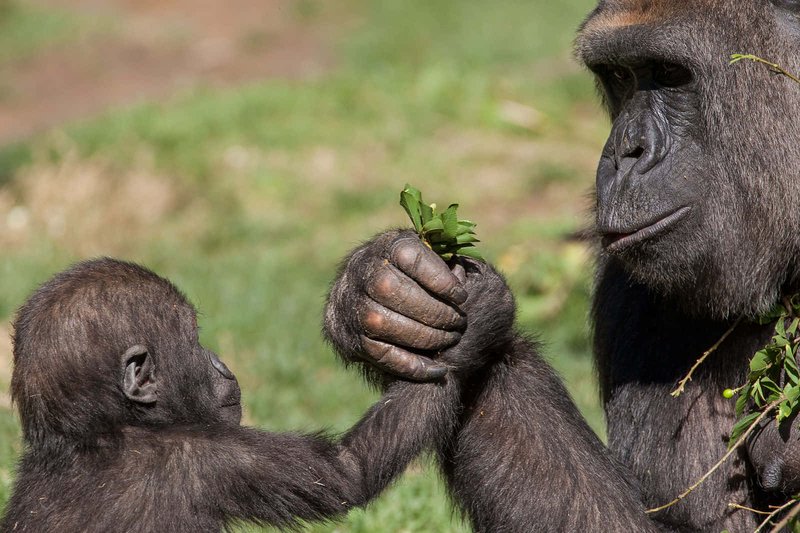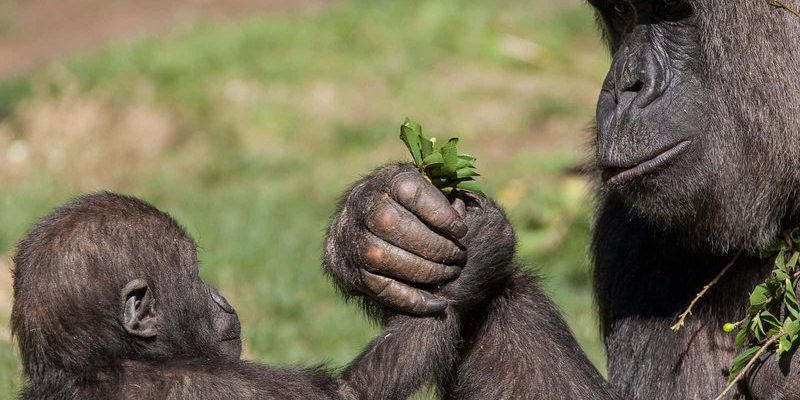
Let’s break this down as if we’re sitting across from each other at a coffee shop. You might picture gorillas as big, furry giants that swing from trees, but there’s a lot more to them. They’re social animals with complex behaviors. Understanding how to react can make all the difference between a peaceful observation and a stressful encounter. So, what should you really do if you find yourself face-to-face with one of these magnificent creatures?
Understand Gorilla Behavior
To respond appropriately when you encounter a gorilla, it’s crucial to understand a bit about their behavior. Gorillas are generally peaceful creatures. They often live in family groups and have a strong social structure. Yet, like all wild animals, they can feel threatened if they perceive danger.
When a gorilla feels uneasy, it may show signs like chest-beating or charging short distances. These behaviors are often warnings, not aggressive actions. Think of it as their way of saying, “Hey, back off!” If you see these signs, it’s crucial to read the situation and not panic.
If you encounter a gorilla in the wild, here are some key behaviors to look out for:
- Chest-beating: A sign of dominance or a way to communicate.
- Charging: Typically, a warning rather than an attack.
- Vocalizations: Low grunts or barks that can indicate a range of emotions.
By understanding these signs, you’ll be better equipped to react calmly and responsibly.
Stay Calm and Assess the Situation
When you first spot a gorilla, staying calm is your best bet. Let’s be real; it’s easy to get overwhelmed. Your heart might be racing, but remember, gorillas can sense fear. If you appear terrified, it could make them anxious too. Take a deep breath and observe.
Assess the environment. Are you in a protected area, or are you alone in the wild? If you’re in a national park or a guided tour, there are usually protocols in place for such encounters. It’s better to let a guide handle the situation if they are available. These folks know gorilla behavior and have experience in managing such encounters.
Here’s what to do next:
- Back Away Slowly: Don’t turn your back on the gorilla. Move away slowly while keeping your eyes on it.
- Avoid Direct Eye Contact: Staring can be interpreted as a challenge. Instead, look generally in its direction.
- Don’t Run: Running can trigger a chase response in the gorilla.
Assessing the situation calmly helps you decide what to do next while keeping both you and the gorilla safe.
Maintain a Safe Distance
Once you’ve assessed the scenario, it’s crucial to maintain a safe distance. Gorillas can be curious animals, but they also value their space. The general guideline is to keep at least 20-30 feet away from them, if possible. This distance helps you avoid unwanted confrontations.
If a gorilla approaches you, it’s usually best to stay still. They might just be curious or trying to gauge who you are. Remember, you’re in their territory. Think of it as visiting a friend’s house; you wouldn’t want to crowd them too much, right?
If you find yourself closer than intended, use these tips:
- Stay Calm: Take deep breaths and keep your posture relaxed.
- Don’t Make Sudden Movements: Jerky movements can startle them.
- Watch Their Body Language: If they seem agitated, give them space.
Maintaining a comfortable distance is key to a peaceful encounter.
Know When to Retreat
Sometimes, despite all efforts, a situation might escalate. If you notice aggressive behavior, like charging or loud vocalizations, it’s time to take a step back—literally. You might be thinking, “How do I know when it’s too much?” Trust your instincts. If you feel uncomfortable, it’s perfectly okay to retreat.
In fact, backing away more aggressively isn’t always a bad choice. Just be sure to do it slowly and calmly. The last thing you want to do is create a panic situation. Use your surroundings to your advantage. Look for natural barriers like trees or rocks that can help you create distance.
Here’s what you should consider:
- Assess Their Reaction: If they seem playful, you’re likely fine. But if they’re agitated, it’s time to move.
- Use Signals: You could wave your arms gently when backing away to show you mean no harm.
- Leave Space: Create as much distance as possible between you and the gorilla.
Retreating doesn’t mean you’re scared; it means you’re smart and respectful of wildlife.
Have a Plan for Safety
Before embarking on a hike in gorilla territory, it’s wise to have a game plan for safety. Think of it like preparing for a big exam—you don’t want to walk in unprepared. Research local guidelines, talk to park rangers, and understand the general do’s and don’ts of gorilla encounters.
Here are some practical steps to take:
- Travel with a Guide: They’re trained on what to do and can provide valuable insights about gorillas.
- Know Emergency Contacts: Have the number of local wildlife authorities saved in your phone.
- Pack Essentials: Always carry water, food, and basic first-aid supplies for unexpected situations.
Having a plan can make your experience safer and more enjoyable, while also minimizing risks.
Respect Their Habitat
Gorillas live in delicate ecosystems that they share with countless other species. As humans, it’s our job to respect their habitat and do our part to protect it. This means not littering, staying on marked paths, and not disturbing their environment.
If you spot a gorilla, try to observe quietly without interfering. It’s about appreciating their natural behavior rather than trying to get too close or take selfies. Honestly, the best memories come from watching them freely interact and thrive in their home.
Here’s how to be a responsible observer:
- Stay on Trails: Protect the ground and the local flora by sticking to pathways.
- Avoid Feeding Them: This can alter their natural habits and create dependency on humans.
- Keep Your Voice Down: Loud noises can disturb their peace.
Respecting their habitat ensures that gorillas can thrive and be enjoyed by future generations.
Final Thoughts on Gorilla Encounters
Encountering a gorilla in the wild is a rare experience that can be incredibly rewarding if approached correctly. You don’t need to be an expert; just remember the basics of staying calm, keeping your distance, and respecting their space. The key is to treat these magnificent animals with the awe and respect they deserve.
Next time you’re surrounded by nature, if a gorilla steps into view, you’ll know exactly what to do. Approach the moment with an open heart and a clear mind, and you might just walk away with a once-in-a-lifetime story to tell!

